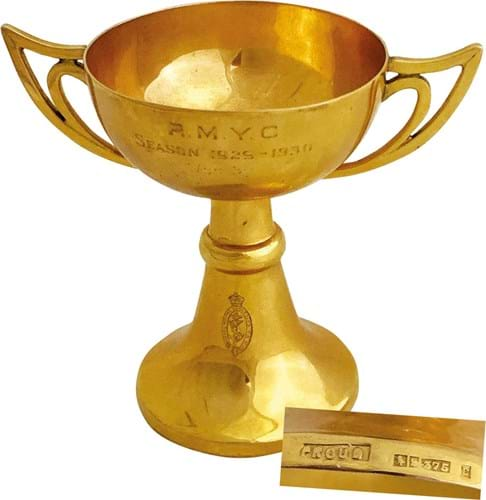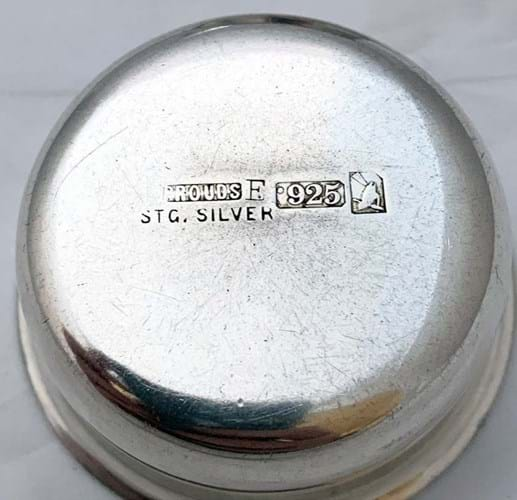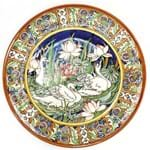
There was little need or demand for control of the fledgling trade by authorities and the relatively few silver and goldsmiths of the time had been happy to ply their trade unfettered with little complaint heard from consumers.
Things changed with the gold rushes of 1850s. Great wealth was accumulated, relatively large sums began to be spent on precious metal objects and the first moments of an indigenous style were ushered in.
Prior to 1850, Australian colonial silver (and a small handful of gold objects) had slavishly followed British styles in the production of simple flatware, the odd trophy and a few domestic and ecclesiastical hollowwares. After the gold rushes a distinct ‘Australianisation’ of British styles emerged – notably through the celebration of local flora and fauna and the revival of the Schatzkammer taste (silver mounted emu eggs and the like) popularised by a number of German immigrant silversmiths.
In short, Australian gold and silversmithing gained its own identity.
Import challenge
However, it was during the ‘Australian period’ that the blossoming trade in locally sourced bullion became threatened by imported metals of different carats guaranteed by hallmarking (Britain in 1854 had added 15ct, 12ct and 9ct gold to the prevailing 18ct and 22ct standards). The first clamour for a similar Australian system was heard.
The London government was unpersuaded. So too the Australian federal government after nationhood in 1901. Attempts to piece together agreements by the various state governments also failed.
Instead, in a little-known event in Australian gold and silversmithing, a voluntary hallmarking system was conceived by the Retail Jewellers’ Association of NSW and the Sydney Hall Mark Co was formed in 1916. After logistic, financial and technological issues had finally been overcome, the assay office was officially opened in 1923 and hallmarking briefly flourished in New South Wales and Victoria under the new title The Commonwealth of Australia Hall Mark Co.
The symbol of the kookaburra indicated gold and the wren was chosen for silver. A date letter system was employed (starting with A for 1923), maker’s marks were registered and punches chosen to indicate the metal standard and the state of manufacture.
A letter in the records from the Hall Mark company to the Commonwealth Statistician states that “the method of identification being the oblong punch with square corners indicating NSW; the right top corner is missing for Victoria, the left bottom corner for Queensland, and the (top) left corner for South Australia”. It further advises: “This is a distinct improvement on the British system, as there is only one symbol in Australia, while in Britain every Assay office has a different symbol.”
Ambitious but short-lived
Why then did it fail by 1940?
In truth, certain key ingredients to a successful hallmarking system were lacking. Unlike in Europe, hallmarking in Australia had not evolved over many years to become part of the broader social and economic fabric of society.
Its brief 17 years of fledgling existence contrasted with the more than 600 years that hallmarking had enjoyed in England where the practice was part of a much bigger picture that – under the auspices of the London Goldsmiths Company – included the administration of apprenticeships, the setting of skill standards, the regulation of trading conditions and promotion of the craft itself.
In Australia hallmarking had arrived knocking on the door uninvited, was not supported by the government and was neither compulsory nor universal.
Of course, the Great Depression, triggered by the Wall Street Crash of October 1929, and then the Second World War in 1939 did not help matters but the system was, by its very nature, unlikely ever to rise above being a very laudable but ambitious and limited marketing strategy embraced by some but not others.
The market today

The base of a silver (Blue Wren mark) mustard pot assayed in Melbourne (note top right-hand corner clipped) and the date letter E for 1927.
Hallmarked items of Australian silver and gold tend to be the more modest functional items – for example small silver tableware, napkin rings etc and in gold cufflinks and small items of jewellery.
They do not usually require a very deep pocket – measured in hundreds of pounds rather than thousands.
However, they do come at a premium over and above the manufacturer-marked items which are far more plentiful. Pieces carrying a Melbourne mark (with the clipped top right-hand corner of the kookaburra or wren) are less plentiful and attract more of a premium than items assayed in Sydney. Australian auctions and eBay often offer examples and dealers in their shops or at fairs may occasionally have such items in stock. However, the very nature of the objects and the time frame of Australian hallmarking makes finding such objects today into a quest.
Jolyon Warwick James is a silver consultant, historian and valuer, originally from London and based in Sydney since 1980s. He is the author of the recently published Australian Gold and Silversmiths Marks – from the records of the Sydney Hall Mark Co and the Commonwealth of Australia Hall Mark Co, 1923 to 1928. Price £45 (Air Mail postage outside Australia, with tracking, +£25). To order your copy contact jolyonwjames@gmail.com.













